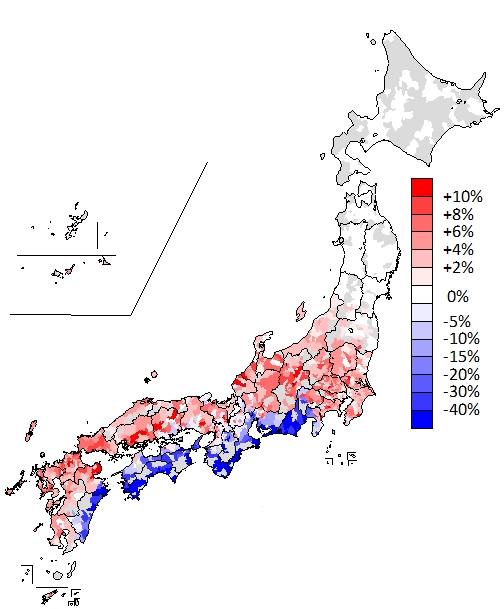Predicting population movements after a major disaster
The Laboratory of Urban Risk Management is conducting research on wide-area evacuation, relocation, and population outflow after a major disaster. There are various studies, such as a large-scale wide-area evacuation survey that collected data on the movement of 10,000 people from the Fukushima Nuclear Power Plant at the time of the Great East Japan Earthquake, an evacuation simulation, a national land reconstruction simulation, and a wide-area reconstruction plan. Here, we explain the simulation results for predicting population movement after the major Nankai Trough earthquake that is said to occur within the next few decades. The following is a brief overview of the current situation of our research.
We calculated the number of affected households that would require emergency housing by weighing the number of buildings that would be totally or partially destroyed in a major Nankai Trough earthquake (worst-case Tokai region earthquake). In addition, we calculated the number of vacant rental houses available on the market that would not be damaged by the earthquake as well as the supply of deemed temporary housing, while setting the upper limit for prefabricated temporary housing at 50,000 units, which was the actual number of prefabricated houses used in the Great East Japan Earthquake. Based on these assumptions, we developed a mathematical model of evacuation behavior based on our questionnaire survey and allocated affected households to temporary housing on a first-come, first-served basis, subject to the number of emergency housing units available in each area.
This was repeated approximately 5,000 times, and took the average to indicate the number of households that could not stay and be housed in their own municipality. The result is shown in the figure below. In addition to the worst-case assumptions mentioned above, the calculations are based on strong constraints such as no deaths, no separation of households, and no consideration of industrial relocation. The results suggest the possibility of a rapid population decline. In response to this, we have calculated that the outflow of the population can be prevented, for example, by encouraging more matching of households that have lost their homes with vacant houses that are not on the market. This is only for the “evacuation” stage before the providence of permanent housing, but there are examples such as Onagawa City, which was severely damaged by the Great East Japan Earthquake, in which cities experienced a 30-40% decrease in population from before the disaster. Moreover, it is important to consider what is to be done by utilizing this type of technology, and it is crucial that plans and responses are formulated in advance.

